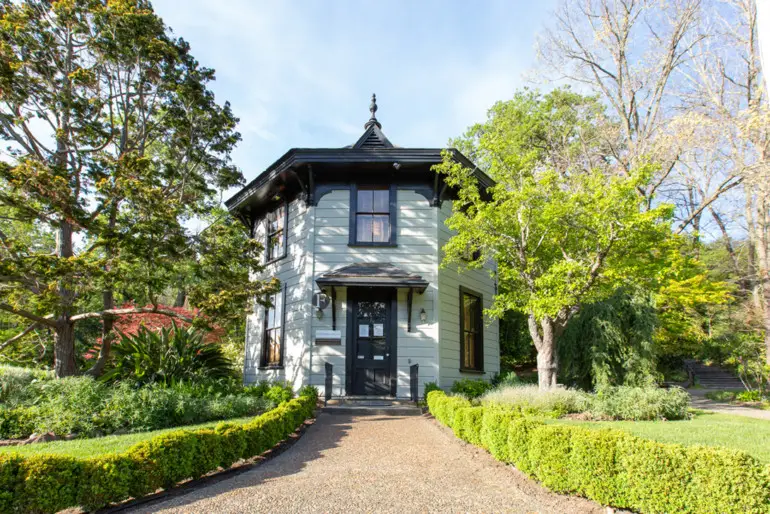Marin Art & Garden Center celebrates its past while moving into the future.
IT WOULD BE A DANDY PLACE TO BUILD homes, the owners of a 10-acre site across from Ross’ City Hall decided. A creek splashed through it, and homes would be shaded by native oaks and exotic trees planted by two of Marin County’s pioneer families.
But Caroline Livermore, a midcentury conservationist, had a different vision. She and her friends, mostly women, all pioneers of the movement to preserve open space, helped save the site for public use and dubbed it the Marin Art & Garden Center in 1945.

Antonia Adezio, who runs the nonprofit center today, sees it largely as a peaceful oasis approaching its well-deserved 75th anniversary in 2020, but the place bristles with an exciting, eventful past.
Most people enter the quiet flower-filled grounds through its main gate, but to better appreciate its story, use the entry just to the east, up the original carriageway that went to a no-longer-existing home owned first by George and Annie Worn since 1864 and then by Jonathan and Harriet Kittle starting in 1882.
Annie Worn, who owned most of what is today San Anselmo, was the daughter of James Ross, the town’s namesake. The Worns’ home on what is today the MAGC property was a substantial ranch house; the Kittles transformed it into a Queen Anne mansion after they bought it in 1882. Jonathan Kittle was an early settler and businessman.

Tragedy struck in 1931, first when the Kittles’ son died from eating toxic mushrooms, then when the mansion burned in 1931. All that remains of the original homestead are a fairy ring of magnolia trees that sprouted from the magnificent Southern magnolia that bordered the mansion, a barn, and an eight-sided two- story structure, built in 1864, whose elegance belies its original function as a pump house.
In the ever-evolving center, the Octagon House, as the pump house is now called, became the Jose Moya del Pino Library, named after the Coit Tower muralist who also helped found the garden center, in the late 1960s. In the past, though, the pump house has served as a billiard room, a residence, and an informational center for the county fair from 1947 to 1970.

The barn, theater for Ross Valley Players, has been a site for local theater since 1939. Photographers, bird-watchers and dog walkers can still enjoy the rose garden, the basketry garden and such remarkable trees as the dawn redwood, English oak and giant sequoia, all of which add to the rustic bay region avor left by midcentury architects who helped design the center.
Landscape architect Thomas Church worked on the center’s master plan. The Pixie Park playground, originally designed by landscape architect Robert Royston, remains popular with center visitors. During the late 1940s, Gardner Dailey created an art studio that today holds exhibits. The whimsical Bottle House is a 1948 creation by Ray Oleson, and a cluster of under-stated modernist buildings by Don Emmons, of the firm Wurster Bernardi & Emmons, genuflect to the site.
And yes, a few new homes were built on the site, and some were later incorporated into the garden center. One repurposed house is now an antiques consignment shop redolent with history.

